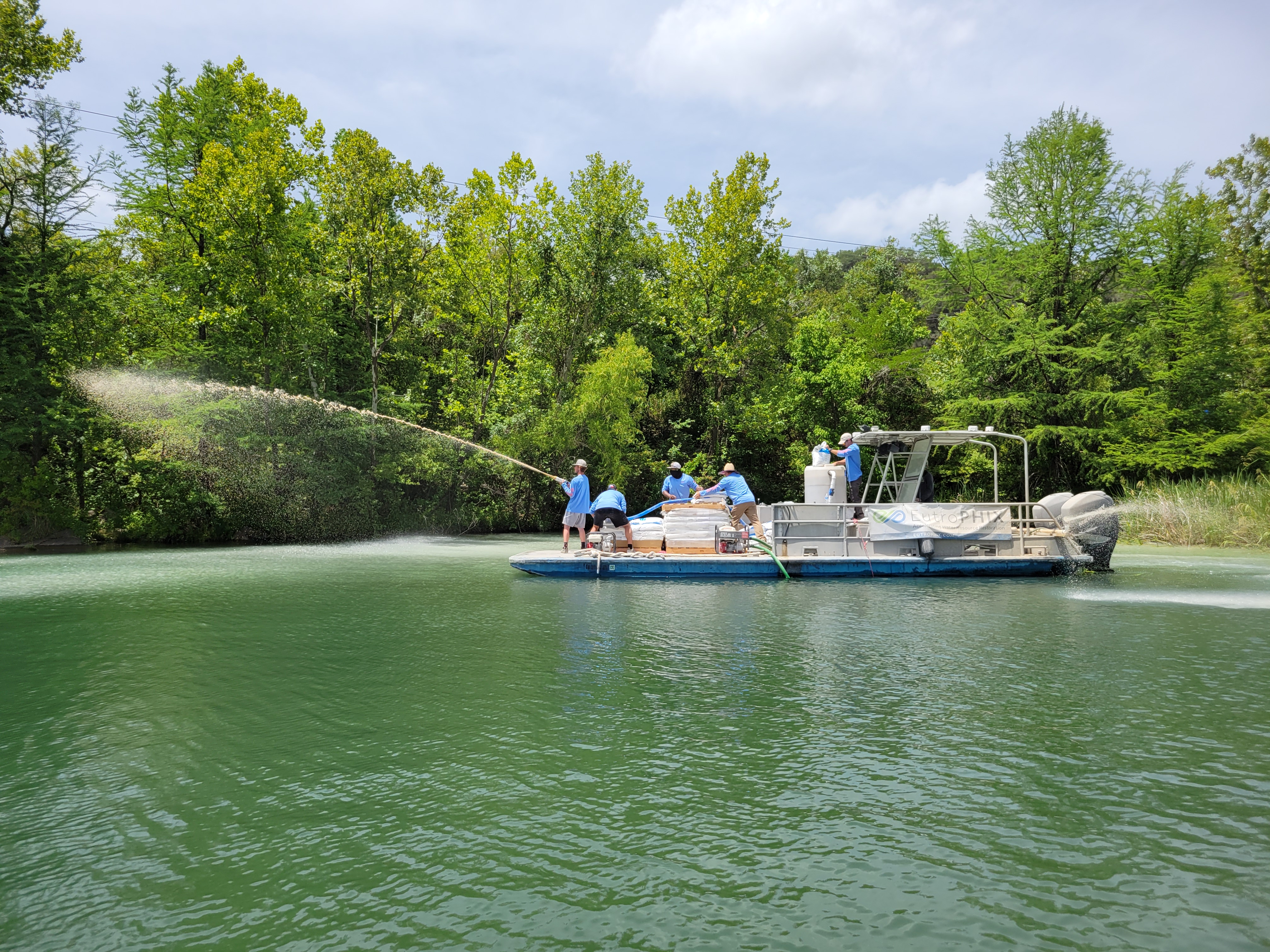
City of Austin
FOR IMMEDIATE RELEASERelease Date:
Contact: Watershed Protection Media Line 512-974-1450

The program consists of spraying a clay material into three areas of the lake.
The City of Austin will conduct its fourth year of a five-year pilot program to reduce harmful algae blooms on parts of Lady Bird Lake. A harmful algae bloom occurs when Cyanobacteria, or blue-green algae, produce toxins. The pilot program consists of applying lanthanum-modified clay in specific areas of the lake. The clay binds to phosphorus, a key source of nutrients for algae. Once bound into a mineral form, the phosphorus becomes unavailable to the algae. The idea is to essentially rob the algae of one of its primary food sources and reduce its growth.
The first application this year will take place on Monday, June 3, in three locations. If additional time is needed, the contractor would continue the work on June 4. A second and third application are planned for July and August. The contractor applies the material from a barge. It will look like the team is spraying a gray slurry into the lake that temporarily clouds the water. The substance is safe, but recreational boaters should stay away from the barge.
The contractor will apply the lanthanum-modified clay at:
- Red Bud Isle
- The boat ramp on the north shore of the lake, just west of I-35.
- The north shore of the lake between I-35 and the lagoon behind the Festival Beach Boat Ramp.
The second location is new and has been chosen for research purposes to help identify any unforeseen impacts on aquatic insects. No impacts are expected.
The results of the pilot program over the past three years have been mixed. At Red Bud Isle, there has been a reduction in the amount of harmful algae after each application in June. The July and August applications appear to hold the line without achieving any further reduction of the algae. By the time following June and the first application of the year rolls around, the algae has generally returned. This year, the City of Austin observed a recurrence early in the spring, but the rains over the past two months have reduced its presence. There was not much present on the lakes in mid-May.
East of I-35, the lanthanum-modified clay does not appear to be having any effect. This may be because new sediments from upstream areas are covering up the clay and bringing in more nutrients.
The pilot program costs $300,000 per year and is funded through the drainage charge, assessed on utility bills.
Reducing the amount of nutrients being washed into the lake would likely be the most effective solution. Austin residents can do their part by avoiding or limiting the use of fertilizers and picking up after their pets. For those that live along creeks, it would be helpful to plant trees, shrubs, perennials, and native grasses to help filter pollutants from stormwater. Removal or reduction of lawn size in favor of native vegetation will also help reduce runoff to storm drains and receiving waterbodies.
It's important to note that Austin residents contribute only part of the nutrients. Areas upstream of Austin and outside of the City’s jurisdiction are a major source of nutrients to the lakes. Fertilizers, leaking septic tanks, and treated wastewater effluent are all potential sources of nutrients. In addition to nutrient levels, climate change and zebra mussels are also likely altering nutrient cycling dynamics that can promote harmful algae blooms.
Fortunately, most of the harmful algae blooms in the Austin area are not as widespread as in many other areas of the country and the world. It has not been necessary to close the lakes to recreation. That’s because the toxins have been confined to the algae mats, which are very patchy in their distribution, and toxins have not been released into the water.
The first documented harmful algae bloom on Lady Bird Lake occurred in 2019 and one has occurred every year since then. Blooms have also occurred on Lake Austin, other Highland Lakes and on Barton Creek. There may have been harmful algae blooms on other creeks and water bodies as well, but these have not been documented.
Harmful algae blooms can be fatal to dogs and make people sick. In addition to harmful algae, other risks associated with natural water bodies include bacteria and parasites. The City recommends that people and pets avoid contact with algae, not drink water directly from the lake, and rinse off after contact with the water. Do not allow dogs to lick their fur prior to rinsing. Please note that swimming is prohibited in Lady Bird Lake.
If a person has sudden, unexplained symptoms after swimming, they should contact their medical provider or the Texas Poison Control Center at 1-800-222-1222. For a pet, they should contact their veterinarian. Please also let the City know by completing the reporting form, found at AustinTexas.gov/Algae.
